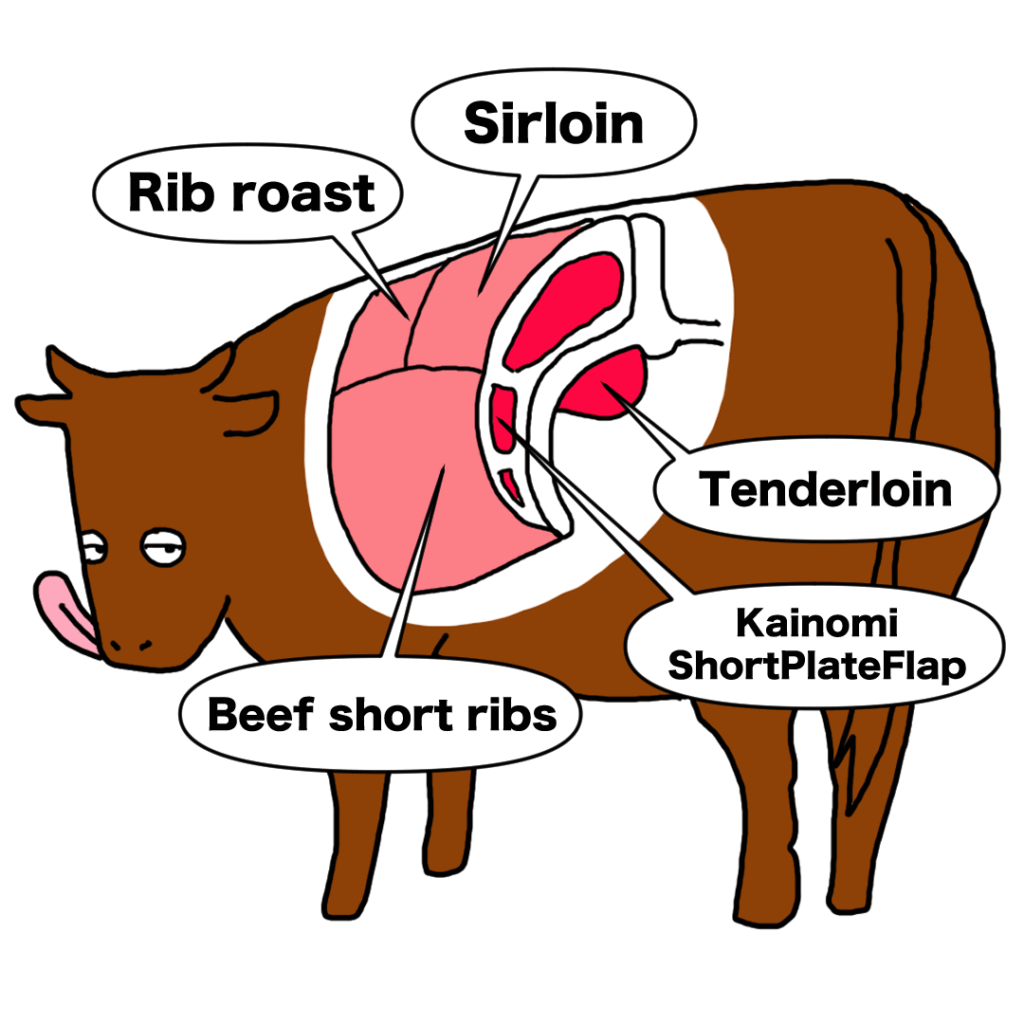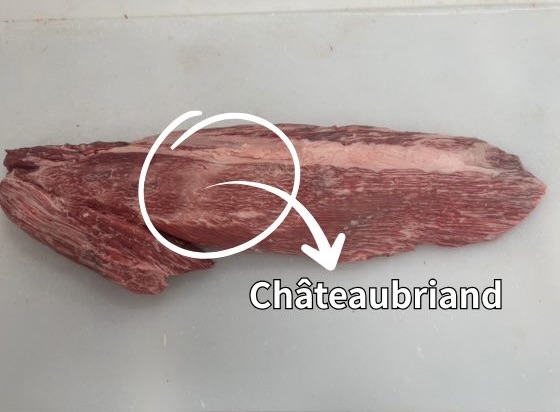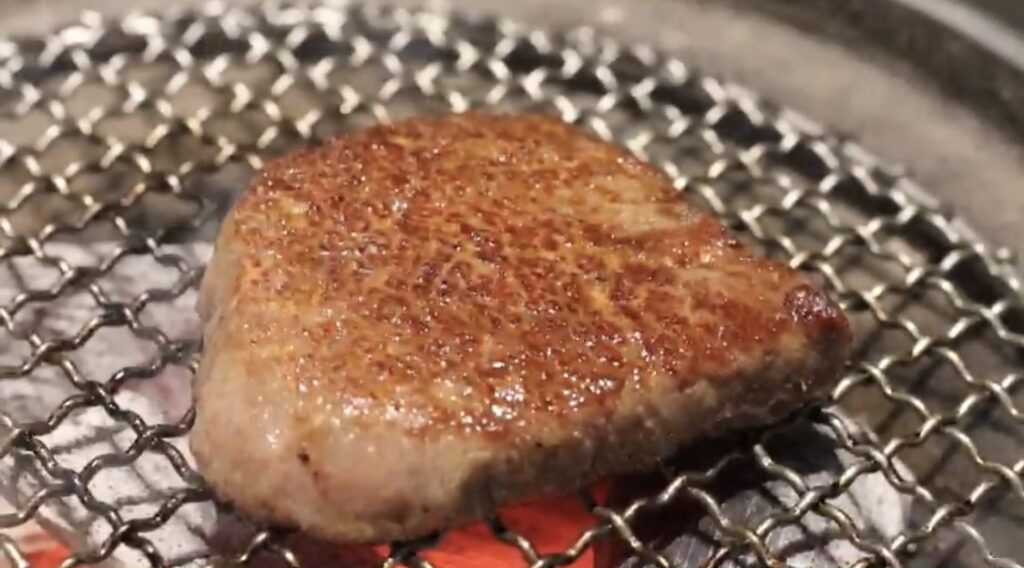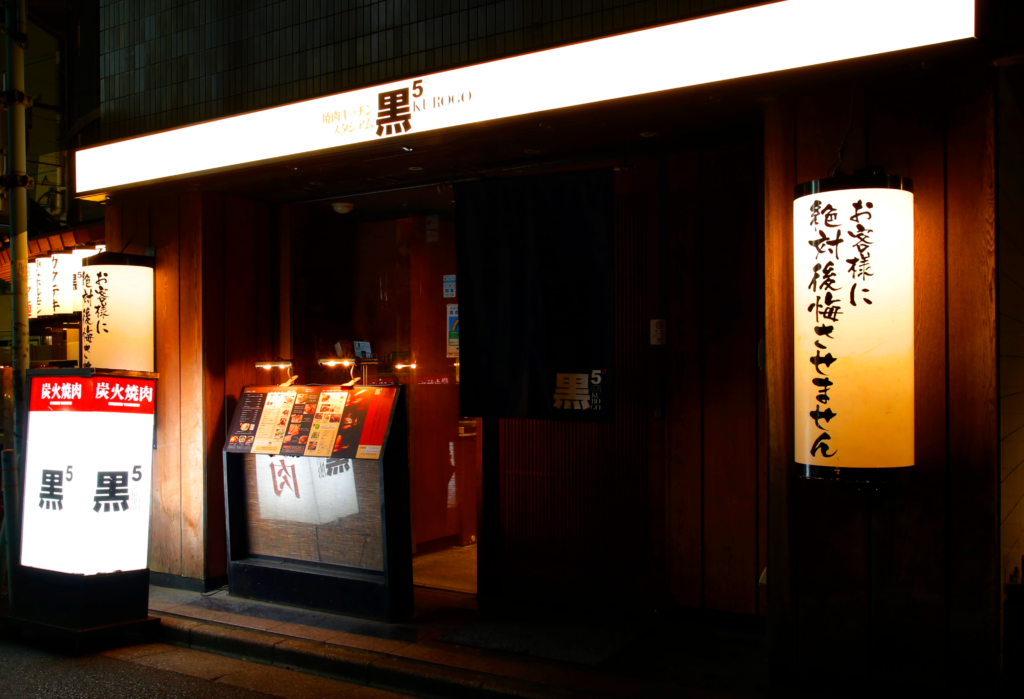In the world of steak and yakiniku, few cuts symbolize “ultimate tenderness” like the Tenderloin (known as Filet). And at the very heart of that tenderloin lies the Chateaubriand – the thickest, most prized section of all. Both are rare, luxurious cuts, but their character and ideal preparation differ in subtle yet meaningful ways. Let’s take a closer look at what makes each so special before we introduce a secret item unique to Kuro5.

What Is Tenderloin?
The Tenderloin runs along the inside of the cow’s lower back, right next to the spine. Because it is barely used when the animal moves, its muscle fibers are extremely fine, and it contains very little fat. This makes it the most tender part of the entire cow – silky, mild, and elegant in flavor.

Highlights of the Tenderloin
- Exceptional tenderness: The fibers are fine and smooth, allowing your knife – and your teeth – to glide through easily.
- Clean flavor: Low in fat but rich in natural umami. A gentle sweetness without heaviness.
- Transformative with heat: Best enjoyed seared on the outside and kept rare to medium-rare inside.
- Rarity: Only a small amount can be harvested from each cow, making it one of the most expensive cuts.
Tenderloin doesn’t “melt” like fatty meat – it gently falls apart. Its beauty lies in refinement, not richness. It’s a pure, delicate expression of beef itself.
What Is Chateaubriand?
Chateaubriand refers to the thick, uniform center section of the tenderloin. Because it’s the widest and most even part of the muscle, it allows for ideal heat control during cooking – creating a perfectly balanced steak every time.

Highlights of the Chateaubriand
- Thick-cut luxury: A crispy seared crust with a soft, velvety interior – a harmony only thickness can achieve.
- Clean aroma: The center of the tenderloin contains no sinew or excess fat, giving a pure, refined flavor.
- A special occasion cut: It’s not about quantity – just one bite satisfies both the palate and the spirit.

Chateaubriand takes the best qualities of tenderloin and magnifies them through thickness. When cooked properly, it delivers a silky, almost creamy texture without relying on marbling or fat.
Tenderloin vs. Chateaubriand – What’s the Difference?
- Definition: Tenderloin refers to the entire long, cylindrical muscle. Chateaubriand is the thickest center portion cut from it.
- Texture: Tenderloin is evenly soft and fine throughout. Chateaubriand has a plumper, silkier bite thanks to its thickness.
- Cooking style: Tenderloin suits rare to medium-rare grilling. Chateaubriand benefits from high heat searing and gentle resting.
- Flavor: Both are clean and refined, but Chateaubriand offers a deeper richness and fuller body due to its size.
- Rarity and price: Tenderloin is already rare and costly; Chateaubriand is even more exclusive.
In short: Tenderloin represents quiet elegance, while Chateaubriand embodies indulgent perfection. Both rely not on fat, but on the precision of heat and timing to reveal their full potential.
Keys to the Perfect Tender Steak

- Sear at high heat: Create a flavorful crust and lock in juices.
- Keep the center rare to medium-rare: Avoid overcooking to preserve moisture and softness.
- Let it rest: Resting allows juices to redistribute evenly, especially for thick cuts.
- Season lightly: Salt, pepper, or a touch of wasabi – simplicity enhances elegance.
The beauty of these cuts lies in restraint. Tenderloin and Chateaubriand don’t need complex seasoning – they shine when treated with precision and respect.
A Word from Kuro5 – The “Pencil” Cut: Our Hidden Gem

At Kuro5, true tenderloin is offered only occasionally due to its rarity and high cost. However, we proudly serve a special hidden cut known as the “Pencil” (Enpitsu) – often called the “tenderloin of the ribeye.” It’s a secret menu item for guests who truly appreciate the finer side of yakiniku.
- What is the Pencil? A slender section running within the ribeye, combining the refinement of tenderloin with the aroma of rib fat.
- Flavor: Silky, moist, and subtly rich – a perfect middle ground between lean and marbled meat.
- Recommended preparation: Lightly salted, quickly seared over charcoal, and served with fresh wasabi. A single bite melts gently on the tongue.
The Pencil is our way of expressing “tenderloin luxury” through the artistry of the ribeye. It’s not always available, so feel free to ask our staff discreetly. If we have it in stock, we’ll serve it in the best possible condition – a true insider’s treat.
Conclusion
The Tenderloin and Chateaubriand represent the quiet side of luxury – refinement through simplicity, and emotion through texture. At Kuro5, while tenderloin appears only occasionally, our hidden Pencil cut lets you experience that same tenderness with a uniquely Kuro5 twist. Next time you visit, ask our team about it – and discover a level of softness that defines the art of Japanese yakiniku.

Wagyu Yakiniku Kuro5
IKEBUKURO Main Restrant
1F Shima 100 building ,2-46-3, Ikebukuro, Toshima-ku , Tokyo 171-0014
https://en.kuro5.net/restaurant/honten
Wagyu Yakiniku Kuro5
IKEBUKURO East Exit Restrant
2F Need Building, 1-42-16 Higashi-Ikebukuro, Toshima-ku, Tokyo 170-0013
https://en.kuro5.net/restaurant/higashiguchi
Wagyu Yakiniku KURO5
Kabukicho
1F Sankei Building, 2-21-4 Kabukicho, Shinjuku-ku, Tokyo
https://en.kuro5.net/restaurant/kabukicho
Official Instagram: @kuro5yakiniku





